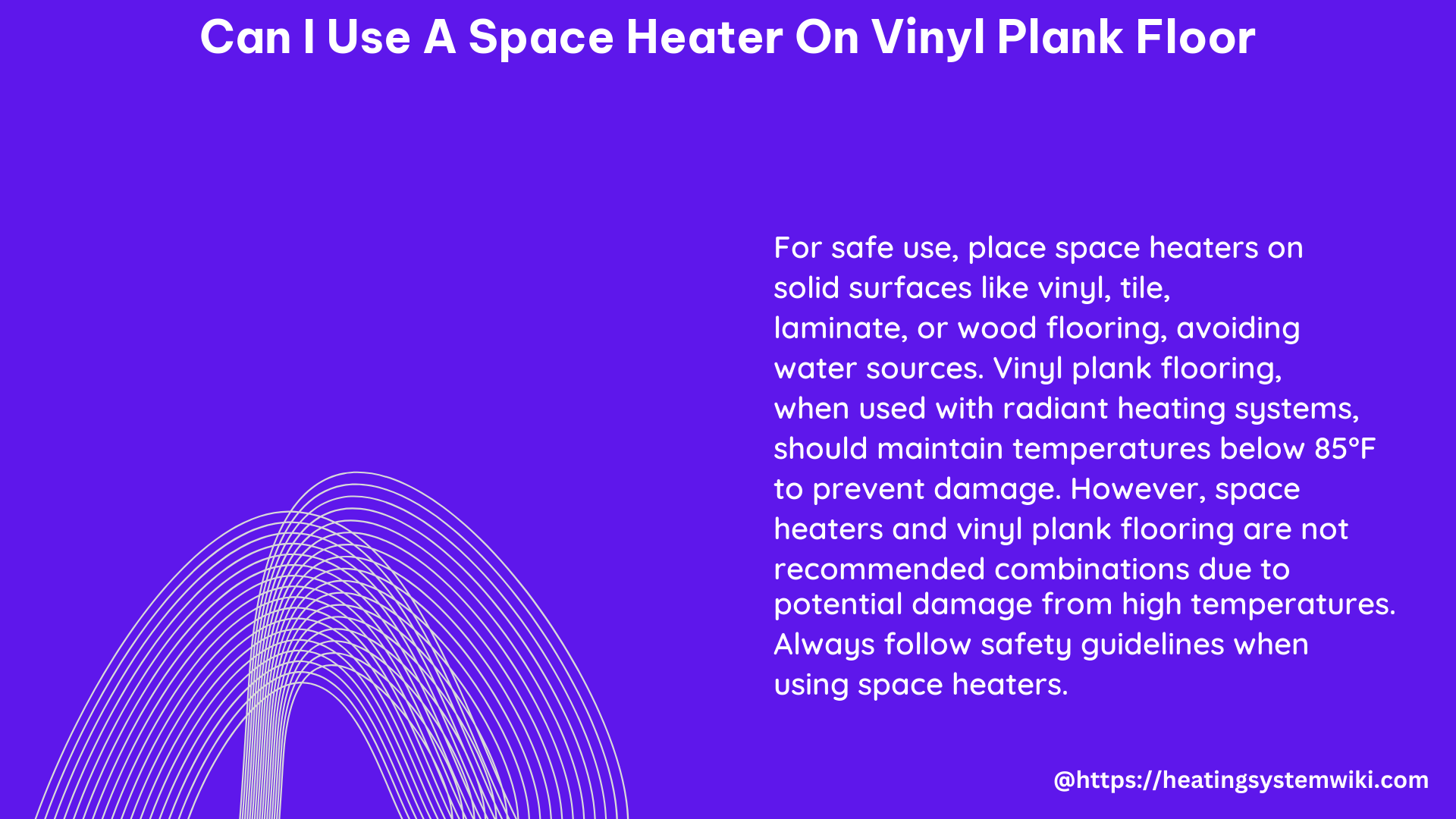Vinyl plank flooring has become increasingly popular in recent years due to its durability, easy installation, and water-resistant properties. However, when it comes to using a space heater on a vinyl plank floor, there are several important factors to consider to ensure the longevity and integrity of your flooring.
Understanding Vinyl Plank Flooring and Heat Resistance
Vinyl plank flooring is generally considered a heat-resistant material, but it does have its limits. The recommended temperature range for vinyl plank flooring is typically between 55°F (13°C) and 85°F (29°C). Exposure to temperatures outside of this range can lead to various issues, such as:
- Shrinkage: Excessive heat can cause the vinyl planks to shrink, leading to gaps and uneven surfaces.
- Color Degradation: High temperatures can cause the color and finish of the vinyl planks to fade or discolor over time.
- Warping: Extreme heat can cause the vinyl planks to warp or become misshapen, compromising the overall appearance and structural integrity of the flooring.
It’s important to note that the specific heat tolerance of vinyl plank flooring can vary depending on the manufacturer and the quality of the product. Higher-end vinyl plank flooring may have a slightly higher heat tolerance compared to more budget-friendly options.
Potential Risks of Using a Space Heater on Vinyl Plank Flooring

Space heaters are designed to provide localized heating, often generating temperatures well above the recommended range for vinyl plank flooring. Prolonged exposure to the intense heat from a space heater can lead to the following issues:
- Damage to the Vinyl Plank Surface: The high heat from a space heater can cause the vinyl surface to become discolored, brittle, or even melt, leading to permanent damage to the flooring.
- Warping and Deformation: The concentrated heat from a space heater can cause the vinyl planks to warp, buckle, or become misshapen, compromising the overall appearance and structural integrity of the flooring.
- Fire Hazard: Space heaters are known to be a potential fire hazard, especially if placed too close to flammable materials, such as vinyl plank flooring. This can pose a serious safety risk to your home and its occupants.
Factors to Consider When Using a Space Heater on Vinyl Plank Flooring
If you must use a space heater on a vinyl plank floor, there are several factors to consider to minimize the risk of damage:
- Heating Output: Choose a space heater with a lower heating output, ideally one that does not exceed the recommended temperature range for your vinyl plank flooring. Avoid high-powered space heaters that can quickly raise the temperature beyond safe levels.
- Placement: Position the space heater at least 3 feet (0.9 meters) away from the vinyl plank flooring and ensure that it is not directly pointing at the floor. This will help distribute the heat more evenly and reduce the risk of localized hot spots.
- Thermostat Control: Use a space heater with a thermostat that can maintain a consistent temperature within the recommended range for your vinyl plank flooring. Regularly monitor the temperature to ensure it does not exceed the safe limit.
- Airflow and Ventilation: Ensure that the space heater is placed in an area with good airflow and ventilation to prevent the buildup of excessive heat around the vinyl plank flooring.
- Timing and Duration: Limit the use of the space heater to short periods, and avoid leaving it running for extended periods of time. This will help minimize the exposure of the vinyl plank flooring to high temperatures.
- Manufacturer Recommendations: Consult the manufacturer’s instructions for your specific vinyl plank flooring to understand their recommendations and guidelines for using a space heater or other heat sources.
Alternatives to Using a Space Heater on Vinyl Plank Flooring
If you’re looking to heat a room with vinyl plank flooring, there are alternative options that may be safer and more suitable:
- Radiant Floor Heating: Radiant floor heating systems are designed to work seamlessly with vinyl plank flooring, as they provide a more even and consistent heat distribution without the risk of localized hot spots.
- Portable Heaters with Fans: Consider using a portable heater with a fan feature, which can help distribute the heat more evenly throughout the room without directly targeting the vinyl plank flooring.
- Area Rugs: Placing area rugs over the vinyl plank flooring can help insulate and protect the surface from the direct heat of a space heater.
Conclusion
While vinyl plank flooring is generally a durable and heat-resistant material, using a space heater on it can pose significant risks, including damage to the surface, warping, and even fire hazards. If you must use a space heater, it’s crucial to carefully consider the factors mentioned in this guide and follow the manufacturer’s recommendations to minimize the potential for harm to your vinyl plank flooring. For the best long-term results, it’s often recommended to explore alternative heating solutions that are specifically designed to work in harmony with vinyl plank floors.
References:
– Heated Vinyl Floor: What You Need to Know
– Are Vinyl Plank Floors Heat Resistant?
– Safe to Install Vinyl Plank Flooring Under Appliances?
